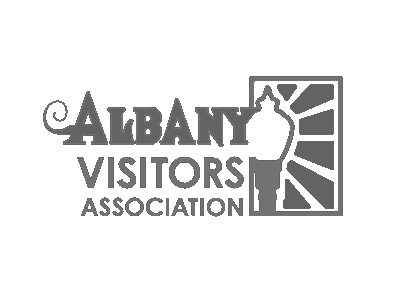Food Carts
The City of Albany has had an increase in food trucks operating within city limits. It is important to remember that food trucks have a responsibility to take care of their waste much like a restaurant. While working in a food truck please use the following Best Management Practices (BMPs).
Food Cart Best Management Practices
While operating a food truck please use the following Best Management Practices (BMPs).
- Do not dump grey water (hand-washing water, food wastewater, sink water, mop bucket water, water with disinfectant, etc.) into a storm drain, parking lot or street.
- Do not wash or spray down food cart equipment, spills, contaminated pavement or containers into a catch basin, planters, sidewalk or street.
- Do not allow food waste and oil to run from a truck into a catch basin or onto a street.
- Do not leave waste or oil containers uncovered and exposed to rain.
- Maintain food cart grey water holding systems, not repairing leaks, or cleaning up spills from waste transfers (such as the dump hose and hose connections).
- Do not establish an ad-hoc sewer connection using a hose or hard plumbing. Wastewater from a mobile unit can only be discharged to the sanitary sewer at an approved location.
Failure to follow the BMPs can result in enforcement actions against the truck operator, the property owner or both. The city notifies property owners of violations and enforcement related to their property. Enforcement actions can include fines, corrective actions and cost recovery for damages or cleanup. Repeat violations will result in escalating enforcement with increasing fines.
Disposal of Food Cart Waste
A list of haulers is posted at preferredpumper.org. All businesses on the list are trained and permitted to haul and dispose of food cart wastes.
If you have any questions on how to follow the food cart BMPs or on what to do if you have a spill, please contact
- Details
Fat, Oils and Grease (FOG) requirements
About
What is the big deal about FOG?
If fats, oils, and grease drain into the water system, they can cause slow draining pipes, clogged pipes, and even sewer backups causing costly private property damage.
Failure to maintain a grease interceptor/trap can create foul odors and lead to fines from the City. Save your money and follow some simple best management practices that can save your business time and money while protecting Albany's water system.
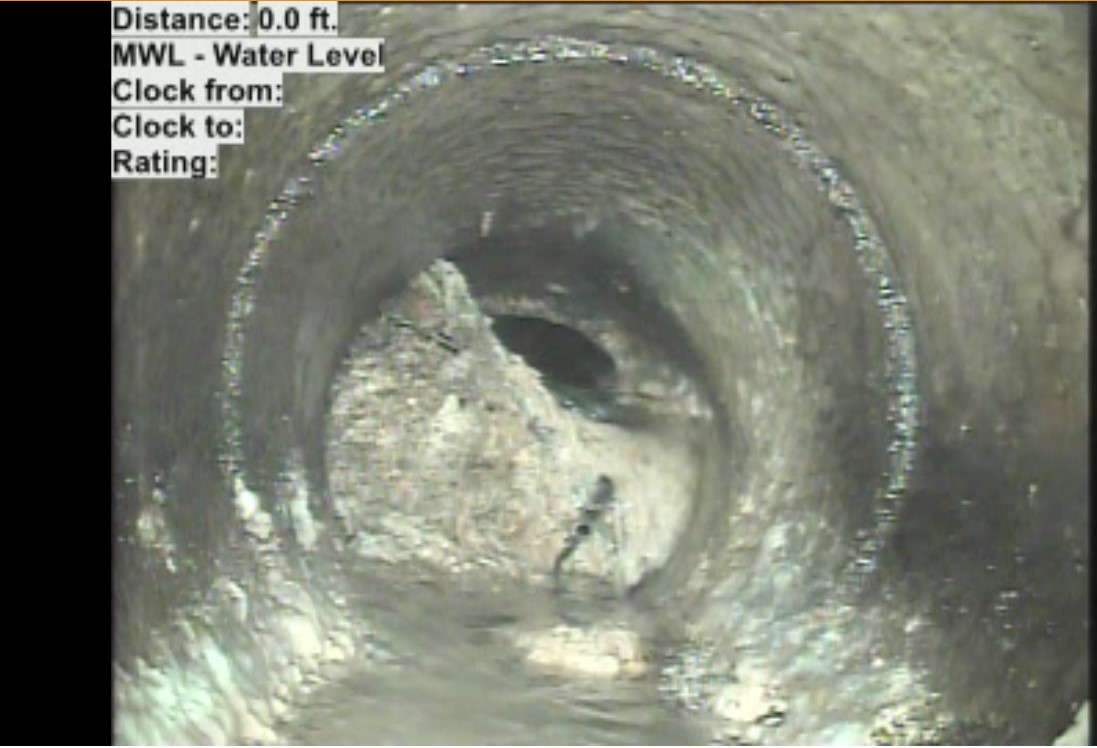
Common FOG sources:
- Fried foods
- Baked goods
- Cooked meats
- Butter and other dairy products
- Gravy and sauces
- Mayonnaise and salad dressings
- Food scraps

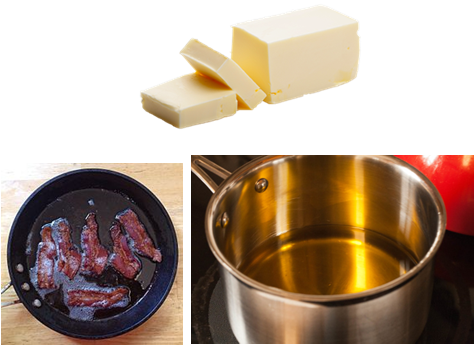
But what is an FSE?
Oregon Plumbing Specialty Code (OPSC) defines a Food Service Establishment (FSE) as a facility that engages in activities of preparing or serving food or beverage for consumption either on or off the premises including, but not limited to, restaurants, cafes, commercial kitchens, caterers, hotels/motels, prisons, correctional facilities, nursing homes, care institutions.
These establishments are responsible for the installation and maintenance of grease interceptors/traps. The cities of Albany and Millersburg currently have more than 30 FSEs.
Requirements
Interceptor Requirements
 A grease interceptor captures wastewater discharge from a Food Service Establishment (FSE). Water flows from the sink, dishwasher, and drains to a tank. As the water cools, the FOG separates and floats on the top or settles to the bottom. The water in the middle drains to the wastewater system, leaving behind the FOG to be disposed of in the trash.
A grease interceptor captures wastewater discharge from a Food Service Establishment (FSE). Water flows from the sink, dishwasher, and drains to a tank. As the water cools, the FOG separates and floats on the top or settles to the bottom. The water in the middle drains to the wastewater system, leaving behind the FOG to be disposed of in the trash.
Per Albany Municipal Code, 10.06.080:
“the owner of any facility with a grease interceptor installation shall maintain the grease interceptor at all times in a manner that shall prevent fat waste, oil, or grease from being carried into the sanitary sewer system.”
Your business can coordinate with a preferred pumper to keep your interceptor functioning properly and keep proper records of removal.
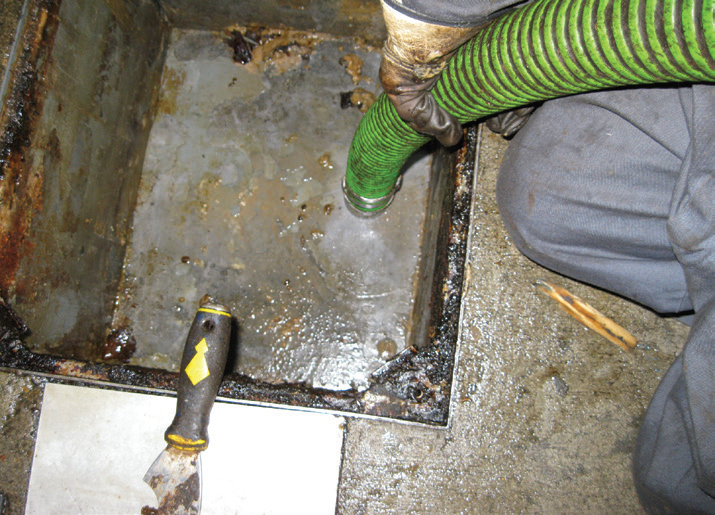
The size of your interceptor and your food production will determine the cleaning or pump-out interval. The Oregon Plumbing Specialty Code determines the minimum size of a grease interceptor installation, however grease production in food service establishments varies according to the menu.
You can prevent odors and sanitary sewer back-ups from clogs caused by fats, oil, and grease when you consider FOG production in determining your cleaning schedule. A pumper can help you with establishing a cleaning schedule. An interceptor should be cleaned out a minimum of every three months to stop buildup and keep the fats from decaying and creating a foul odor.
The interceptor must be installed outside the building to facilitate cleaning and inspections. Authorized City employees shall be allowed access to the interceptors for inspection and/or to verify compliance. FOG shall never be allowed to enter the stormwater system either directly or from overflow. FOG must be removed from the facility and disposed of properly.
Do you own a new business?
If you are remodeling, converting a facility, or newly constructing a food business, you are required to install a grease interceptor/trap according to Albany Municipal Code 10.06.080 (3). Grease interceptors shall be sized, designed, constructed, and installed in accordance with the Uniform Plumbing Code (UPC) standards, and any other requirements set by the Director through the City plan review and permit process. Grease interceptors shall be located outside the building in order to facilitate cleaning, inspection, and maintenance. Installation of smaller grease traps or grease interceptors located inside any building will be allowed only under circumstances where exterior installation is not effective or not practicable, and shall be approved only on a case-by-case basis. Authorized City employees shall be allowed access to the interceptors for inspection and/or to verify compliance.
Please contact the Building Division for more details.
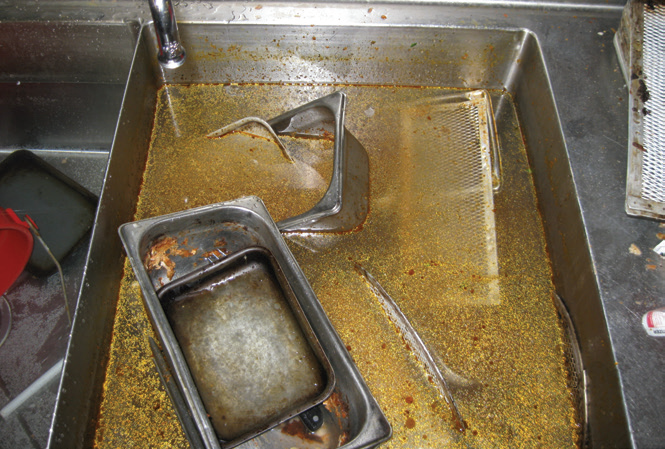
Best Management Practices (BMP)
Best Management Practices (BMP)
Best management practices are activities that manage and control the disposal of FOG. There are some simple steps you can take to reduce your addition of FOG to the water system.
- Regularly maintain your grease interceptor/trap
- Collect used cooking oil
- Scrape plates and bowls into the trash or compost
- Wipe pots and pans with a paper towel before washing
- Have sink strainers or covers on all drains
- Do not sweep spills into the drains
- Do not dump anything into the storm drains
- Use water temperatures less than 140° F
Cleaning a grease interceptor
Click the video below to learn how to clean a grease trap:
Is your FSE looking for a Preferred Pumper?
FSEs are required to have a grease interceptor and be on an effective maintenance schedule. A Preferred Pumper may be the right answer for you. Preferred Pumpers work with the City to establish a standard of cleaning and reporting procedures for grease interceptors. The developed criteria promotes effective maintenance, which extends the life of the equipment, helps prevent building sewer backups and helps ensure compliance of local sewer use ordinances.
- Details
Cannabis Industry
Best Management Practices
The Federal Clean Water Act requires Cities to regulate industries that discharge wastewater or stormwater to the City’s sanitary sewer systems. The City of Albany sets the pollutant limits and regulates industries in order to protect the Albany Millersburg Water Reclamation Facility (AMWRF) and surrounding watersheds. Below are guidelines and Best Management Practices (BMP) for businesses and individuals interested in the cannabis industry within the City of Albany.
The following is an overview of Industrial Pretreatment requirements for business owners and individuals interested in the cannabis industry.
Pollutants of Concern
Cultivation and Plant Growing Operations
Businesses growing cannabis plants for processing into consumer products:
- Nitrates
- Phosphorus
- Pesticides
- Fungicides
Prohibitions:
- Pesticides or plant growing chemicals may interfere with the operations of the wastewater treatment plant. Substances that may cause interference are prohibited from being discharged to the sanitary sewer system per AMC 10.06.010(1).
Cannabinoid Extraction
Business involved in the extraction of active ingredients from plant material.
- Various solvents used to extract oils from cannabis plants.
Gaseous solvents like carbon dioxide, propane or butane cannot be introduced into wastewater, so they are not regulated by the City of Albany.
Liquid solvents and alcohols are regulated. Alcohols, while flammable, dissolve in water are biodegradable at the wastewater treatment plant. In small quantities, alcohols do not present a hazard.
Prohibitions:
- Hexane partitions in wastewater and is highly flammable, which presents a hazard. Hexane is prohibited from being discharged to the sanitary sewer system.
Food Production with Cannabinoid Oils
- Fats
- Oils
- Grease
- Biochemical Oxygen Demand (BOD)
- Total Suspended Solids (TSS)
Fats, oils and greases can block sewers and cause sewage backups and overflows.
More concentrated wastewater pollutants including BOD and TSS are considered “extra strength” wastewater which costs more for the treatment plant to treat. Businesses often pay increased wastewater rates, as a result.
Cannabis Dispensaries
Currently there are no known pollutants of concern specific to this aspect of the industry.
Best Management Practices (BMPs)
Cultivation and Plant Growing Operations
- Control chemical use and optimize nutrients and biocides application or dosing to minimize chemical waste.
- Eliminate sewer entry points. Do not install drains or sumps in cultivation rooms. This may not be possible for hydroponic facilities due to high water usage.
- All chemicals must be stored in a manner, method and location that ensures that there is no threat of discharge to the sanitary sewer or stormwater systems. Store all chemicals on secondary containment.
- Have a written spill procedure plant posted in areas where spills may occur. Train all employees when hired and annually thereafter on how to respond to a spill and the appropriate clean up methods.
- Comply with all pesticide laws and regulations as enforced by the Oregon Department of Agriculture.
Cannabinoid Extraction
- Employ closed loop systems. These extraction systems minimize the amount of product and chemicals that can be discharged in wastewater.
- All chemicals must be stored in a manner, method and location that ensures that there is no threat of discharge to the sanitary sewer or stormwater systems. Eliminate all floor drains and store all chemicals on secondary containment.
- Train all employees to not pour toxic, corrosive, or flammable chemicals down sinks, toilets, or floor drains. Post signs by drains to remind employees not to dispose of these substances in the sanitary sewer system.
- Hire a certified waste hauler to properly dispose of spent waste.
- Have a written spill procedure plant posted in areas where spills may occur. Train all employees when hired and annually thereafter on how to respond to a spill and the appropriate clean up methods.
Food Production with Cannabinoid Oils
- Install and maintain grease removal devices per Oregon Plumbing Specialty Code and City of Albany Code AMC 10.06.080(3)
- Establishments that are designated by the City to be significant dischargers may need to install a monitoring access structure and would be required to apply for an Industrial Wastewater Discharge Permit. AMC 10.06.030(58)(iii)
Rules and Regulations – All Businesses
All Cannabis Industries must abide by the discharge prohibitions listed in AMC 10.06.040(1) and implement Best Management Practices (BMP’s) per Albany Municipal Code AMC 10.06.030(6).
Wastewater Discharge Permits
Currently, no environmental permits are required to discharge wastewater from cultivation or extraction facilities. However, businesses discharging pollutants that may be detrimental to City sewer systems will be required to obtain a discharge permit.
Wastewater Discharge Permit application (pdf)
For additional information contact the City of Albany Environmental Services Industrial Pretreatment Department at
- Details
Craft Fermented Beverage Industry
Best Management Practices
The Federal Clean Water Act requires cities to regulate industries that discharge wastewater or stormwater to the City’s sanitary sewer systems. The City of Albany sets the pollutant limits and regulates industries in order to protect the Albany Millersburg Water Reclamation Facility and surrounding watersheds. Businesses and industries that use fermentation and distillation processes to produce beverages are subject to environmental regulatory requirements and Best Management Practices (BMPs).
The following is an overview of Industrial Pretreatment requirements for business owners and individuals interested in the craft fermented beverage industry including, but not limited to: breweries, distilleries, wineries, cideries, meaderies, and kombucharies.
Pollutants of Concern
pH
The City’s pH range for discharges to the sanitary sewer is 6.0 to 10.0 standard units (SU). Wastewater with pH values outside of that range can corrode pipes and are prohibited from being discharged to the sanitary sewer system. (AMC 10.06.040(c))
Low pH substances (acids) include:
- Vinegar (Acetic Acid)
- Many Sanitizing Chemicals
- Finished Beverage
High pH substances (alkaline) include:
- Cleaners/Detergents
- Bleach (Sodium Hypochlorite)
- Caustic (Sodium Hydroxide)
Prior to discharge to the sanitary sewer system, wastewater pH must be within discharge range of 6.0 to 10.0 su.
- Use a tank or similar vessel to capture both acidic and alkaline waste streams.
- Once the wastes are well mixed, test the resulting pH with a handheld pH meter. If it is within the City’s allowable pH range of 6.0 and 10.0 su, then it may be discharged to the City’s sanitary sewer system.
- If the pH is outside of the range, then add an alkaline chemical to increase the pH or an acidic chemical to reduce the pH to within the allowable range.
- Mix wastewater well before testing the pH with a handheld meter.
- pH must be measured prior to discharging to the sanitary sewer.
- Maintain a log documenting each batch of wastewater discharged to the City.
- The log should include date, discharge volume, pH at time of discharge, and pH meter calibration date.
Solids
While the City’s wastewater treatment plant is designed to treat solids, highly concentrated solids can settle in the sewer pipes and obstruct flow. Discharges that obstruct a sewer line are prohibited. (AMC 10.06.040(b))
Concentrated solids such as spent grains and yeast can be collected for beneficial re-uses. Below are a few examples of how spent grains and yeast can be repurposed:
Agricultural: Spent grains and yeast can be sued by local farmers and livestock owners for on-site composting and feed uses.
Baking: Spent grains can be used by local baking businesses for breads, cookies, and even dog biscuits. Reach out to your local community baking businesses.
Composting: Composting spent grains and yeast can be used to fertilize fields, community gardens, and urban greenhouses.
Supplemental Energy: Fuel-to-energy processes converts spent grain into biogas that can be used to generate energy.
For more information regarding sustainable brewing practices, best management practices and beneficial re-uses at: Brewers Association (www.brewersassociation.org) handout
Best Management Practices (BMPs)
- Plumb all drains from brewing operations to a common drain, sump, or wastewater tank. Control of pH is necessary, and batch treatment to meet pH limits is the best option for many small breweries.
- Set aside sufficient floor space for a wastewater pH equalization/treatment tank, treatment chemical containers and solids handling equipment and storage. Store all chemicals on secondary containment.
- Provide an easily accessible sample site that is representative of the discharge from the brewing operation, separate from the sanitary and restaurant drain lines.
- Consider beneficial reuse: Seek opportunities to turn solids into compost, fertilizer, animal feed, energy, or reuse. See information above.
- Install screens, baskets and filters on all floor drains and trenches. Use appropriate gauge screens and make sure screens are easy to access and service.
- Contain solids at the source. Do not let them hit the ground. If they do, sweep up and collect all solids that are spilled immediately. Do not rinse solids down the drain.
- Train all employees upon hiring and annually thereafter on BMP management practices, solid management practices, and pH control.
Rules and Regulations – All Businesses
All Craft Fermented Beverage Industries must abide by the discharge prohibitions listed in AMC 10.06.040(1) and implement Best Management Practices (BMPs) per Albany Municipal Code AMC 10.06.030(6).
Wastewater Discharge Permits
Currently, a general Wastewater Discharge Permit is required to discharge wastewater from craft fermented beverage facilities.
Wastewater Discharge Permit application (pdf)
For additional information contact the City of Albany Industrial Pretreatment Program at
- Details
Industry Information
Permitted Industries
Wastewater discharge permits are issued to industrial sewer users that are designated by federal regulations (categorical industrial users), industries that have a large potential impact on the treatment system, and industries with high flow or organic loading. These permitted industries are monitored for compliance with permit limits, and to determine sewer billing under the industrial sewer rate. Albany’s current permitted industrial users include, food processors, pharmaceutical manufacturing, titanium casting, metal finishing, research laboratories, resin manufactures, and craft fermented beverages to name a few.
Non-permitted Industries
The following business categories may generate process wastewater that could affect the wastewater treatment system, or store chemicals that could be of concern if spilled or discharged improperly, BUT MAY NOT REQUIRE A PERMIT IF THE FOLLOWING BMPs are implemented. Best Management Practices (BMPs) or guidelines are listed for each business category. BMPs are actions designed to help reduce the amount of pollutants discharged to the environment by improving overall waste management practices and to comply with environmental regulations.
- Automotive repair, including radiator and body shops
- Cannabis Industries
- Dental Offices
- Restaurants and food preparation facilities
- Food Carts
- Paint Waste
- Printing Operations
- Dry cleaners
- Vehicle washing, including mobile wash operations
- Hospitals and medical clinics
- Mobile carpet cleaners
- Industrial laundry
- Grocery stores
- Storage and warehouse
Other categories, even residences, can discharge chemicals or grease improperly that can adversely affect the wastewater collection or treatment system.
If you have questions about your business or home use of chemicals and their discharge to the sanitary sewer system, please contact the Environmental Services division at
- Details




